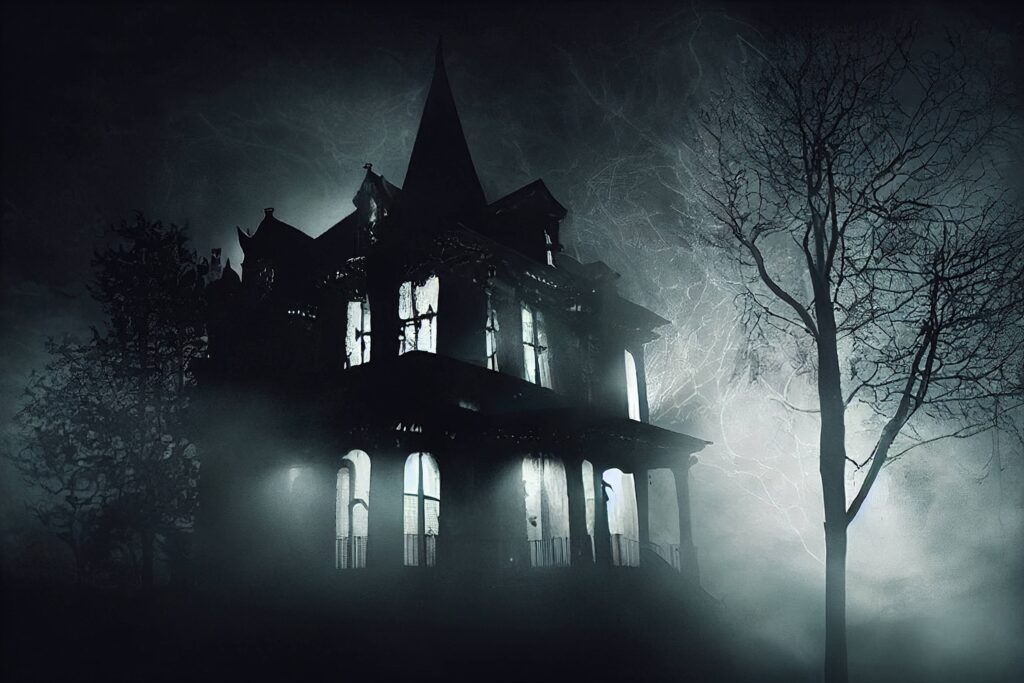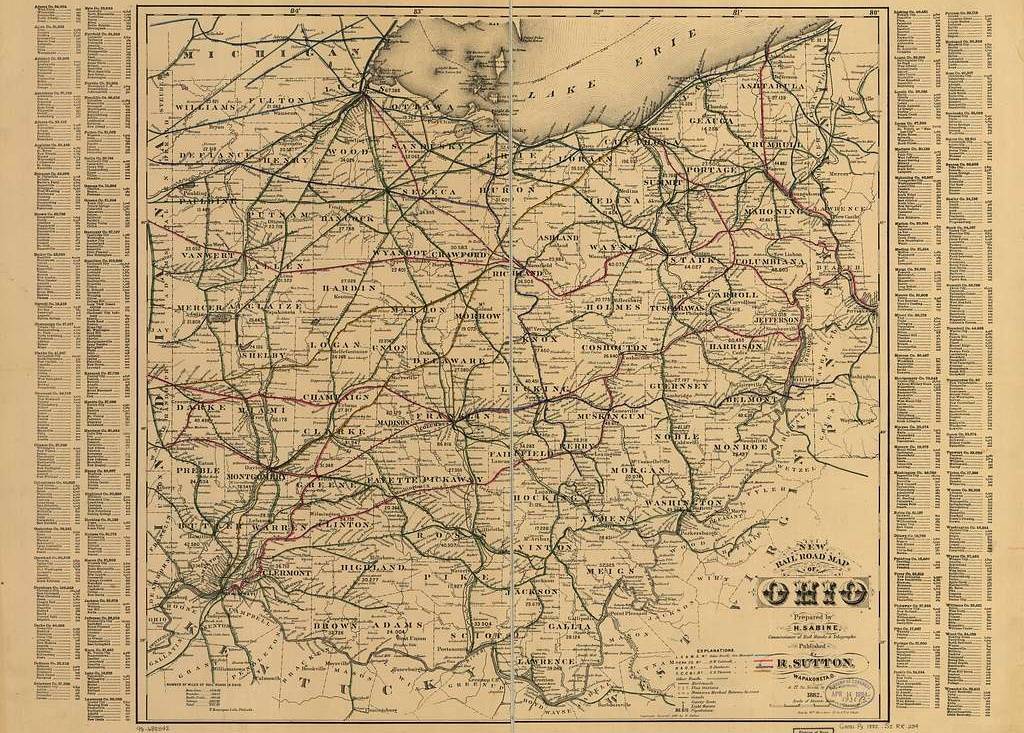It is impossible to study history without running into some myths and legends.
By definition, these are stories we tell (or pass down) to help explain the unexplainable, to breathe new life into old folk tales, to exaggerate people or places who exceed whatever expectations we have placed on them. Most of them do have some element of truth to them, although finding that truth might prove to be rather difficult. Occasionally, those truths are so hidden in the shadows, they are nearly impossible to find.
The problem comes when we start to think these myths and legends contain more truth than they actually have. As the tales are told from generation to generation, old facts get omitted and new facts get added, and before long it’s hard to tell fact from fiction.
I lost count of how many times I’ve heard (or read about) The Gore Orphanage. People say it was a horrid place. People say the people who ran it abused the children in their care. People say that when the orphanage burnt down, all the children burned to death. Some say it was because the owners chained the children to their bed or locked them in their rooms. Others say the fire was caused by supernatural means, occurring during a seance, leading to any number of paranormal theories. Today, they say you can hear the ghostly echoes of the children screaming, either from the fire or from the abuse they endured.
Some people might want you to watch the 2015 horror film Gore Orphanage, which supposedly tells a fictional story about the events that transpired there. Others might ask you to take a drive down Gore Orphanage Road (outside Vermillion, Ohio) to see if you can hear the children’s screams yourself.
The Horrors of Orphanages
What do you think of when you think of orphanages? I think the first mental image most of us have is a place run by Carol Burnett where cute girls sing peppy songs like “It’s The Hard Knocks Life” before a spunky ginger girl named Annie gets adopted by some rich dude and suddenly, magically, everything is okay and everyone lives happily ever after.
Or, maybe we see orphanages as miraculous places where children are sent when their parents can no longer care for them, where they can be adopted by kind, loving couples wanting to start (or enlargen) their families.
The truth is often way more terrifying than that.
History is filled with examples of orphanages (or similar institutions) where horrible things happened, including instances of depravity and inhumanity toward children that we want to blame only that one single institution. The Dozier School for Boys where young boys were tortured, killed, being subjected to extreme racism, and “sentenced” to long periods of hard labor for crimes like looking at someone the wrong way (or just being an orphan) is but one example. Or the sexual molestation of children at the Tekakwitha Orphanage in South Dakota. Those are just two examples out of countless others – the more you look, the more you find.
These examples might just be the worst of the worst, but we need to keep in mind that the system allowed these things to happen. Or, maybe to put it better, the system was not equipped with the tools needed to keep these children safe. Since we know these things happened, it makes us wonder how “nice” any other orphanage or institution was. It makes us wonder what kind of atrocities were committed against children elsewhere.
The Gore Orphanage Legend
With a name like The Gore Orphanage, you’d expect to find any number of horrors. To this day, the road it resided on is still called Gore Orphanage Road, just outside Vermillion, Ohio. Today, you can also find numerous people willing to tell you how they heard ghostly cries on the property, or how they saw the spirits of children at certain spots.
The only problem with all this is … there was no such place as “The Gore Orphanage” in spite of what the name of that road says.
So, where did Gore Orphanage Road come from?
The answer to that is actually quite simple. The road was originally known as Gore Road. Gore, in this case, doesn’t mean disgusting blood and body parts depicted in movies, but a term for a triangular piece of land (or cloth). The “gore” in question happened when an error was (temporarily) made while laying out the dividing line between counties, creating a triangular gore, so the road being built along one edge was named Gore Road.
There was an orphanage on Gore Road. In spite of what the legends say, it wasn’t run by “Old Man Gore” who didn’t give two licks about the children in his care. (Personally, that sounds more like the plot of a Scooby-Doo episode I swear I remember watching as a kid.)
In nearly all versions of the legend, the orphanage at some point burns down and children are said to have burned to death. The details of this fire don’t reflect any of the histories at this place, but it does bear a striking similarity to The Collinwood School File in 1908 (Collinwood, Ohio) where 172 children lost their lives. Collinwood and Vermillion are on opposite sides of Cleveland, so it’s not too hard to imagine how someone might confuse the two later on.
Another thing to keep in mind is that the legend of the Gore Orphanage has appeared numerous times in pop culture, featuring a purely fictional storyline. The 2015 movie Gore Orphanage is an excellent example, as is the ninth episode of season five of Supernatural, in which the Winchester brothers travel to Vermillion for a convention only to have to deal with fake ghostbusters roleplaying as themselves or … something? (I don’t know exactly, never seen the show.)
The Truth Starts With The Swift Mansion
The Swift Mansion was built in 1840 by a guy named Joseph Swift Jr. and from all I’ve seen he was a fairly nice guy, well respected and a pillar of his community. In fact, one of the things the guy seems to have been known for was the parties he held at the Swift Manor farm. People seemed to praise the delicious food, the fabulous entertainment, and the best company one could wish for.
Sadly, Swift made a few bad investments in the railroad business and in 1868 he was forced to sell his land. The new owners are Nicholas and Eliza Jane Wilber. Like the Swift family before, they appeared to be fairly well liked by the community and would have been rather unremarkable except for one thing: Eliza was a bit of a spiritualist.
Today we can look back at the Spiritualism movement and see things in a more accurate light. Spiritualism was all about psychic contact with the dead, hiring mediums to hold seances and that sort of thing. Yes, there were a few well-known and respected spiritualists, but the bulk of practitioners were basically charlatans preying on the gullible people desperately wanting some connection with their newly-departed loved ones. This was done by performing their “rituals” in the dark where vision was limited and knocking on tables to produce the answers from the spirits. Another common technique was the production of “ectoplasm” which was nothing more than a cheesecloth caked with oily fatty stuff and placed in the mouth to be pulled out. It really looked impressive in at least some of the pictures.
Today, they say that Elize Wilber was obsessed over the death of her son and frequently turned to mediums in an attempt to contact her son. Others say that during every meal, she would put a plate out for her son and talk to him as if he were in the room. If these rumors are true, it paints a picture of a woman unable to cope with the loss of her child.
Light of Hope
The property was then sold to J. A. Sprunger who had hoped to turn the place into an orphanage and working farm. People seemed to know that the Sprungers had a history with orphanages – they just didn’t know what kind of history that was. The Reverend Sprunger and his wife were running an orphanage in Indiana when two young girls ran away. That, in and of itself, means nothing as runaways from orphanages were fairly common. The girls were quickly discovered and returned to the orphanage. Several days later they were “discovered” locked in a sweltering room without any form of ventilation except for a small window above the door. There was no toilet in the room and it did not appear the girls had much in the way of food or water.
The man who had been in charge of the orphanage was arrested. It’s important to note that the Sprungers were away at this time. None fo the reports I read said where the couple had been, just that they had been away. The county then began an investigation into the orphanage, but it seems to have closed before any determinations could be made. Except, it didn’t really close … it relocated to the old Swift property in Ohio. This curious fact has led some to speculate that the Sprungers were trying to evade law enforcement (or whoever was investigating the orphanage) but it is possible that was just a coincidence.
After the Light of Hope Orphanage had been operating in Ohio for several years, it found itself in some hot water again.
The problems started shortly after the children had been fed beef from a sick cow. The local Humaine Society did investigate and found a number of irregularities and the Sprungers found themselves in front of a judge. Reverend Sprunger testified himself that it was true that the children had eaten the meat from a cow that had died after eating too many clover, but he insisted that the beef looked fine. Another issue involved the children being served eggs that had not hatched after a week of sitting in an incubator. This was how the Sprungers determined which eggs were, or were not, fertilized.
The living conditions at the orphanage were also called into question. Several children were found to have been beaten with a switch or a strap. Children were forced to work long hours on the farm, which the Sprungers claimed was teaching them valuable skills they would need as adults. Some of the girls were forced to work in the kitchens and laundry while others were employed in the Printing Office.
One of the ways the orphanage tried to make money was by seeking donations at various churches and part of this missionary mission was the production of the Light of Hope Magazine, which was printed right there on the farm. Three other organizations also printed their materials there and it later came out in court that all three organizations listed the Reverend Sprunger as their president.
The public was outraged after learning about the conditions at the orphanage. Several churches and social organizations began their own mission, trying to locate relatives of the children living there and while they seemed to have some success, it wasn’t nearly enough to be able to save all the kids, which numbered somewhere over one hundred. Several children did go to live with other relatives, or were adopted by people wanting to remove the children from such a horrible place. One child had been returned to his mother, who had no idea her son was there in the first place. The child had been placed there while she was in the hospital for several months recovering from a serious lung infection. After discharge, nobody seemed to know where her son had gone.
It also became known that these children were not getting any kind of proper education. Many of the children were unable to read and write at any level. None of the boys were attending any school at all. The girls maybe saw the inside of a classroom for about a month out of the year. None of the girls “employed” in the kitchen were able to cook themselves even the most basic of foods, so what kind of “education” these children were getting remained to be seen.
Today, a trial like the one the Sprungers faced would most certainly have ended with not only jail time for the leaders, but the orphanage would find itself under new management. Instead, what happened, was that the Sprungers got to keep running their orphanage, but now state officials would also be keeping an eye on things and if nothing improved the Sprungers would find themselves in an even deeper legal mess.
For a short time, things did improve. At least a little.
After the trial, The Light of Hope didn’t seem to be able to make as much money as they previously had. At one point, the Sprungers solicited several of the nearby Churches for funds to purchase another bathtub or two. One of the issues that came out during the trial was how once a month all of the children received their monthly bath. As the orphanage had a single bathtub, which would not get emptied between uses, the children who were not among the first to bathe complained about the dirty bathwater. The funds were raised and a couple of new bathtubs were purchased.
Soon, a few of the families who had adopted children from the Light of Hope also came into question. This includes one boy who had been adopted by an Indiana farmer and his wife and was subjected to severe beatings and forced to work long hard hours on the farm. The boy collapsed (from malnutrition) and was rushed to the hospital, where evidence of his physical abuse was noted. The boy recovered and was sent home only to be found dead a week later. The father was arrested for killing his adopted son. Newspapers reporting on this from Indiana suggested that maybe the boy would have been better off staying at the orphanage, suggesting he still might be alive, today. The writer of the article made it clear that the abuse and neglect from this boy’s adopted family far exceeded the allegations of the orphanage.
In 1910, there was a fire at the Light of Hope Orphanage, however, unlike what the legends all seem to be about, nobody was badly hurt or killed. The blaze started in the Printing Office and destroyed the printing press, leaving the entire building unable to be used. This proved to be devastating to the Sprungers. Not only did they suffer a slight increase in their income by being unable to print things for others, but also because they also printed their own materials and magazines they used to solicit donations from churches and other organizations.
Later that year, another devastating accident would occur, but not on Orphanage grounds. During what was described as a “pleasure outing” the wagon that was being used for a couple of the orphans was involved in a fatal accident with another vehicle and two children, ages 12 and 14 lost their life. This accident was witnessed by sixty-five other orphans (or, “inmates” as they were referred to then).
The death of Reverend Sprunger in late 1911 was the first sign that this orphanage’s reign of terror was finally coming to an end. Soon the orphanage would find itself under new management, eventually being absorbed into other agencies and then being shut down for good.
In the end, I cannot say that no children ever died on the Light of Hope property as this clearly wasn’t the case. What I can say, with some degree of certainty, is that none of the deaths were outside what you would expect, considering the time period (diseases that we now know are entirely treatable and preventable were still a large mystery back then, for example).
To be fair, Light of Hope was a typical orphanage in its time. Compared to modern standards, that’s not saying much.
Enter The Gore Orphanage Road Ghosts
By the time of Reverend Springer’s death, the legends had already begun to be told. Around the campfire, you might hear the story of a mysterious stranger with a hook for a hand who would terrorize someone in the middle of the night making strange noises and the next day they would hear a news report of a killer who escaped from prison with a hook for a hand and then they’d go outside and see a hook just outside their doors. Or, maybe it was the tale of some witch that lived on the outskirts of town and would eat any child who dared to trespass on her property. And, just maybe, you might hear a tale about Old Man Gore who ran an orphanage out on Gore Orphanage Road who did unspeakable things to the children put under his care.
Shortly following Sprunger’s death, children (mainly older teenagers) discovered a new pasttime, something they called “Legend Tripping”. This usually involved the telling of some ghost story involving the orphanage, then daring their so-called friends to visit the property to see if they could discover something that would tell if the stories were true.
Dig Deeper
- Gore Orphanage – Wikipedia
- The Haunted History of Gore Orphanage – Vermillion Chamber of Commerce
- “Haunted” House Destroyed by Fire Mystery Blaze Levels Famous Swift Mansion” The Lorain Times-Herald. Lorain, Ohio. 7 December 1923.
- Gore Orphanage – The Ghosts of Ohio



